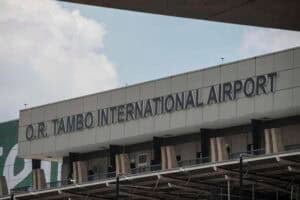On Sunday, Tigrayan authorities announced they are ready for a ceasefire and a 'robust peace process' mediated by the AU.

Ethiopia’s northern region of Tigray erupted in violence nearly two years ago when Prime Minister Abiy Ahmed sent in troops to topple rebels he accused of attacking federal army bases.
Fighting flared anew last month as a five-month humanitarian truce collapsed.
But on Sunday, the rebels said they were ready for a ceasefire and would accept a peace process led by the African Union, bowing to a demand of the Ethiopian government that the AU act as mediator.
A timeline of the conflict:
– 2020: Troops enter Tigray –
On November 4, 2020, Abiy orders a military response to what he calls a “traitorous” attack on federal army camps in Tigray.
He blames the region’s ruling party, the Tigray People’s Liberation Front (TPLF), a former guerrilla group that dominated Ethiopian politics for nearly three decades before Abiy took office in 2018.
Neighbouring Eritrea, which signed a peace deal with Abiy in 2018 that helped him win the Nobel Peace Prize the following year, is reported to have sent troops into Tigray to help Ethiopian forces.
Two weeks later government forces take Tigray’s capital Mekele.
– 2021: ‘Ethnic cleansing’ –
In February 2021, Amnesty International says Eritrean soldiers killed “hundreds of civilians” in November in the ancient city of Axum. In March, US Secretary of State Antony Blinken speaks of “ethnic cleansing” in Tigray.
For months, Ethiopia and Eritrea deny the involvement of Eritrean forces but in March 2021 Abiy finally admits their presence and promptly announces their departure.
– Tigrayans advance –
The rebels retake Mekele in late June 2021, before pushing into the neighbouring regions of Amhara and Afar.
Abiy is sworn in for a new five-year term on October 4.
Two weeks later, Ethiopian aircraft launch deadly strikes on Tigray.
In late October the TPLF claims control of two key cities in Amhara — only a few hundred kilometres north of the Ethiopian capital Addis Ababa.
– Abiy leads battle –
On November 2, 2021, Ethiopia declares a nationwide state of emergency.
A joint UN-Ethiopian report says crimes against humanity may have been committed by “all sides”.
Abiy arrives on the frontline on November 24 to personally direct his troops in battle.
In the first weeks of December, the government says it has recaptured a string of towns, including Lalibela, a UNESCO World Heritage site home to 13th century churches carved out of rock.
– Rebels withdraw –
In December 2021, the rebels say they are withdrawing from Amhara and Afar and the government says its forces will not advance further into Tigray.
The United Nations says dozens of civilians were killed in air strikes on Tigray in late December.
ALSO READ: Ethiopia rebels call for conditional truce
– ‘Humanitarian truce’ –
In early January 2022, dozens are killed in a drone strike on a camp for displaced people in Dedebit in northwest Tigray, the rebels say.
On March 24, the government declares an “indefinite humanitarian truce” to help accelerate delivery of emergency aid into Tigray. The rebels agree to a cessation of hostilities.
– Massacres in Oromia –
On June 18, hundreds of people belonging to the Amhara ethnic group are killed by rebels from the Oromo Liberation Army (OLA) in Ethiopia’s Oromia region, according to survivors.
The OLA, which is in alliance with the TPLF, denies the attacks and blames government forces.
– Peace talks hopes –
In June, Abiy raises the prospect of peace talks with the TPLF and the rebels say they too are ready to take part in a peace process.
But the two sides fail to agree on who should mediate — the rebels reject the African Union’s envoy to the region — and the government rejects the TPLF’s demand that basic services be restored to Tigray as a precondition.
– New offensive –
On August 24, the truce falls apart as fighting resumes on Tigray’s southern border. The two sides blame each other.
At least four people including children are killed in an air strike by Ethiopian forces on Mekele. The rebels meanwhile mount a new push south into Amhara and Afar.
This video is no longer available.
On Sunday, Tigrayan authorities announce they are ready for a ceasefire and a “robust peace process” mediated by the AU.






